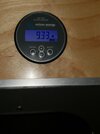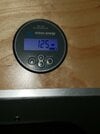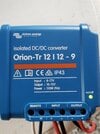Did not. But I do need the LED adapter.
I apologize for asking because I’m sure you’ve described it in exquisite detail but I just can’t find it ...
Do you know what the “behavior” of the AUX pin is on the Raven? Is it providing 12V while the vehicle’s in motion? Stationary?
Just curious if and how I can use it to top off the 12V system on the trailer once it arrives. Our camper comes with a 12V compressor fridge - Max 5.7a draw. Would love to leave it running while in transit, and still keep the 12V battery topped off.
Debating upgrading the minuscule 85w solar panel it comes with - seems like it’s almost a waste of space. Will check wire gauge once I get the thing and see how big we can get. Would love to replace it with a residential 300W panel.... and add a second.





